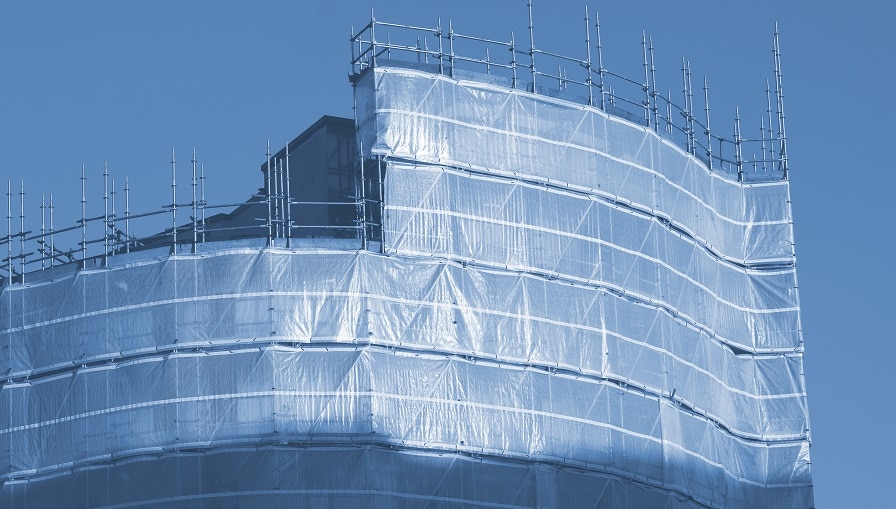Accidents in the construction industry have a high fatality rate compared to other sectors, and the frequency of minor accidents is staggering. This brings to light the need for strict adherence to health and safety guidelines on construction sites. A variety of risks and hazards that may result in potentially fatal accidents are regular features of the construction industry. All construction site hazards must be managed to make work sites safer, but certain hazards are a priority and must be dealt with immediately. This list includes the common hazards found in construction sites as well as how they can be managed.
1. Moving objects
Construction sites are dynamic work environments; accidents can occur at any stage of the construction work. This is because of mobile equipment such as diggers, overhead lifting gear, and supply vehicles being operated in the same space, thereby increasing the likelihood of accidents. Using personal protective equipment such as high visibility clothing, biohazards suits, safety goggles and helmets help protect you from accidents caused by moving equipment.
2. Avoid standing close to moving objects
On a construction site, you should always remain alert. Not all moving objects will have beepers or warning lights.
3. Noise
HSE reports from 2007 to 2011 show that there have been over 1505 new construction work-related deafness claims in the UK. Women accounted for 10 of these cases, with men making up a staggering 1495 cases. This goes to show how the high level of dangerous noise present on a construction site can pose a challenge to worker safety. The reason for this is that construction workers are always reluctant to put on protective gear, which is dangerous for them. Another significant concern is the use of counterfeit or bad hearing protectors. Safety measure: make sure you always use the right hearing protector while on the construction site.
4. Asbestos
Fun fact: asbestos is made up of six fibrous minerals. When materials that contain asbestos are damaged or disturbed, these fibrous minerals are released into the air. Exposure to these fibrous minerals can cause serious health issues with fatal consequences even though the mineral occurs naturally. Asbestos inhalation has been linked with diseases such as lung cancer, pleural thickening, and asbestosis. Annually, 5000 deaths in the construction industry are caused by asbestos, with an average mortality rate of 20 deaths each week. The figures are high because in the UK there are nearly 500,000 public buildings containing asbestos. Safety measure: it’s your duty as an employer to inform your workers if your worksite has asbestos. Your employees should also be trained on the right course of action if they encounter materials containing asbestos.
5. HAVS
HAVS (Hand Arm Vibration Syndrome) is a debilitating and painful disease of the nerves, joints, and blood vessels. The sustained use of power tools, such as ground working equipment and vibrating power tools, is responsible for this disease. Fortunately, HAVS can be avoided; however, it is permanent when the harm is done. Over 2 million construction workers are vulnerable to HAVS, according to the HSE. HAVS affects the ability to work; exposure to cold weather triggers pain in the affected person’s fingers. Safety precaution: always protect yourself with quality PPE before handling any power tools on the site.
6. Falls
Falls account for over 40% of accidents on construction sites, making them the leading cause of death on construction sites. Safety tip: always use fall protection on site irrespective of the fall distance. It’s crucial to check the condition of fall protection gear before use; make sure you look out for damage and faults such as frayed or knotted ropes, broken parts, or stress cracks. It’s vital to have the correct scaffolding system for your project. Contact Ace Scaffolding Scaffolding for innovative scaffolding solutions for your worksite; we use expert scaffolders to create a safe work environment for your project.
7. Takedowns
Anyone familiar with the construction industry will know construction projects aren’t only about putting things up – things also have to come down. Demolition is a natural part of the process. Some projects include working underground or boring into the soil with excavations that make holes and trenches – all of which can lead to injuries and casualties if a crash occurs. Safety measures: a routine review of collapse risks should be performed during the project. The integrity of temporary structures, such as protective barriers and scaffolding systems, must be evaluated regularly. Risk areas should be clearly defined and fit for purposes, and signs and systems for high visibility should be built.
8. Vehicles
The use of moving equipment and vehicles is also involved in construction sites. The NHASA reports that being hit by a moving vehicle is among the most common causes of fatal accidents on construction sites. Safety tips: the proper barrier systems and signs should be used to identify areas with moving vehicles; traffic management should be carried out. Extensive assessments must be conducted on the safety protocols and vehicle use.
On a final note – put safety first. Written safety pass policies significantly reduce the number of construction accidents on a site. Incorporating on-site safety programs that supply the workers with daily and weekly safety guidelines and reminders is a great idea. Remember to invest in PPE equipment for proper protection. Conducting routine maintenance of tools and machinery could be the difference between life and death in the long run; do not skip the checks.








